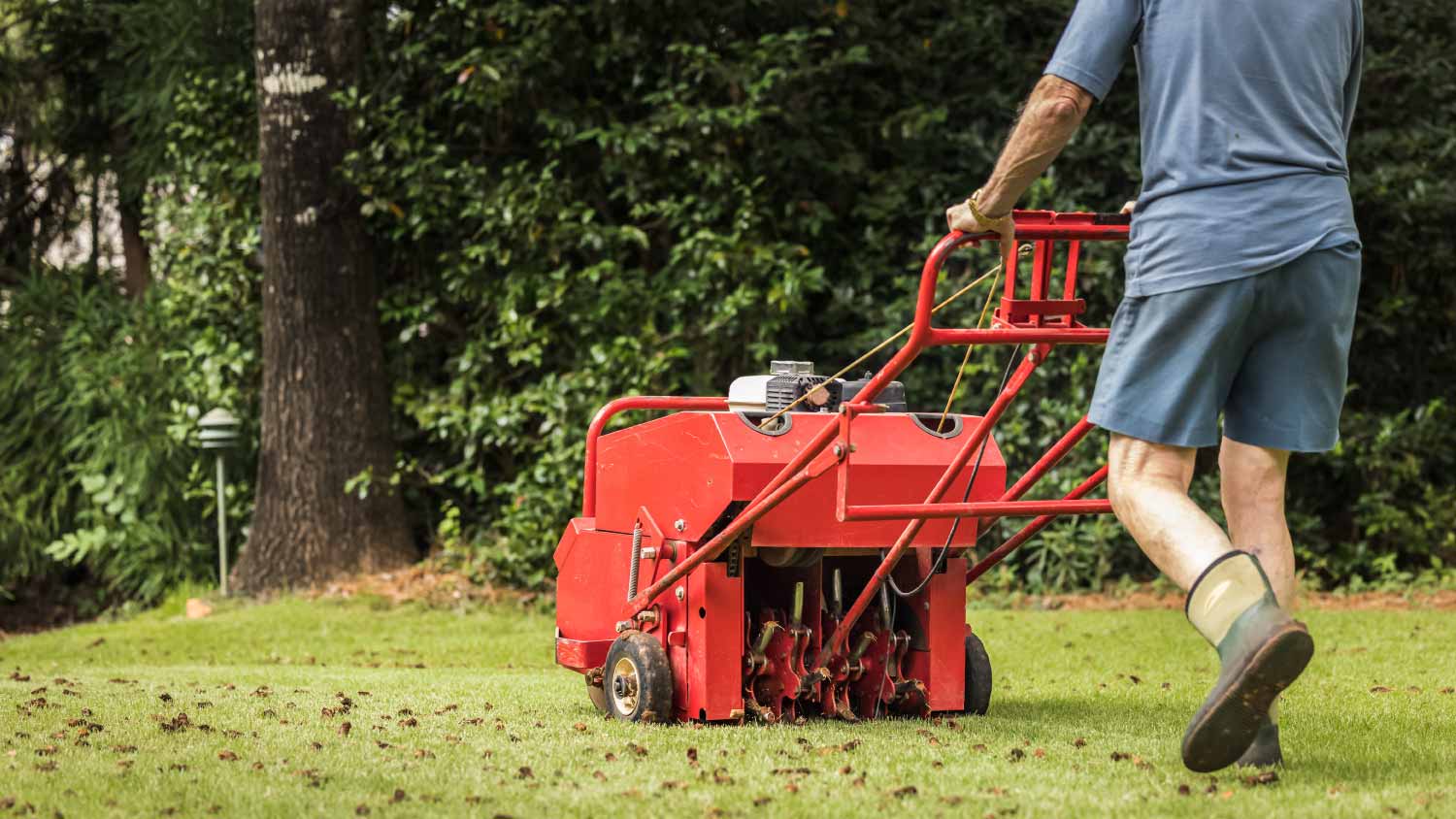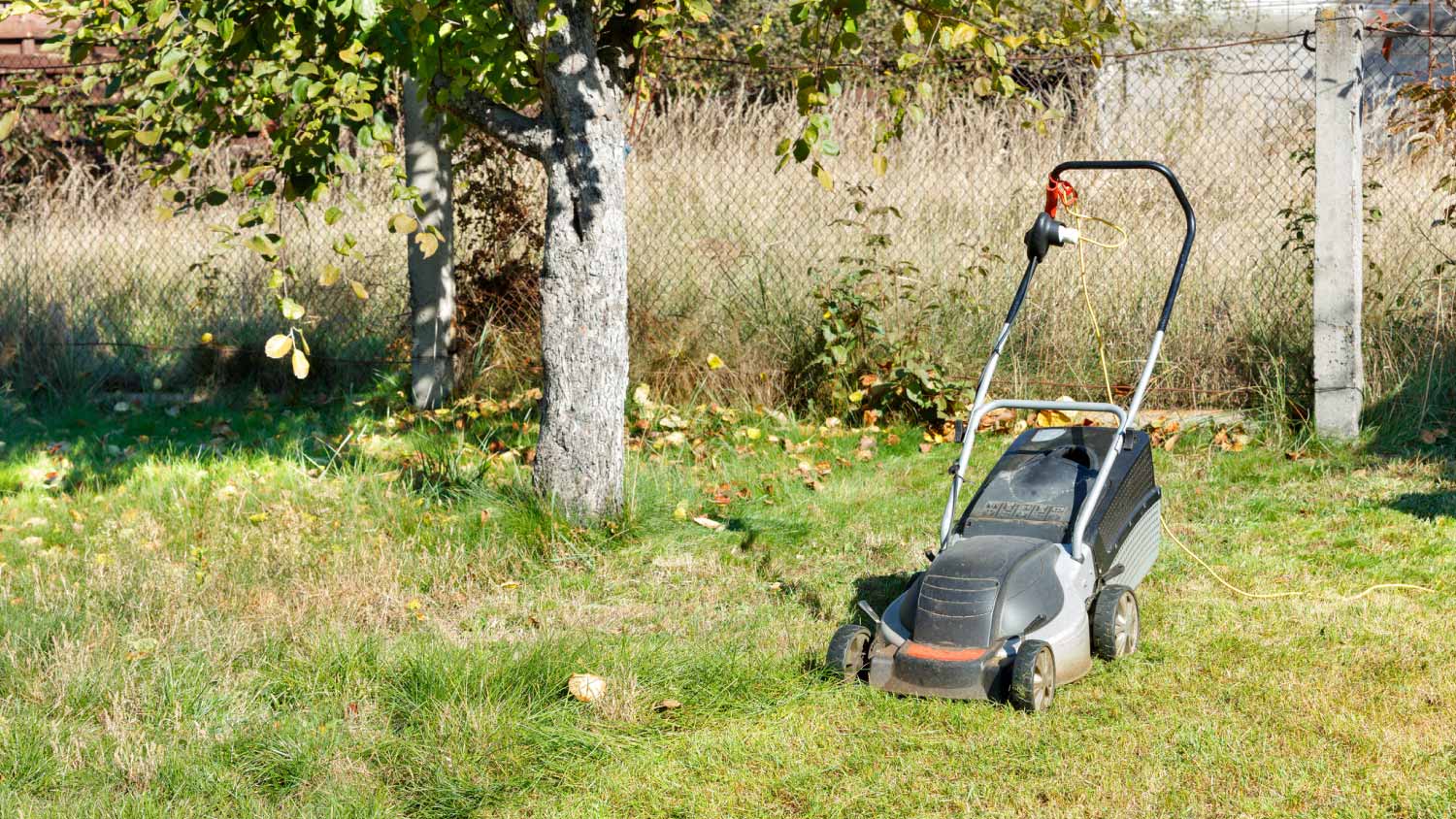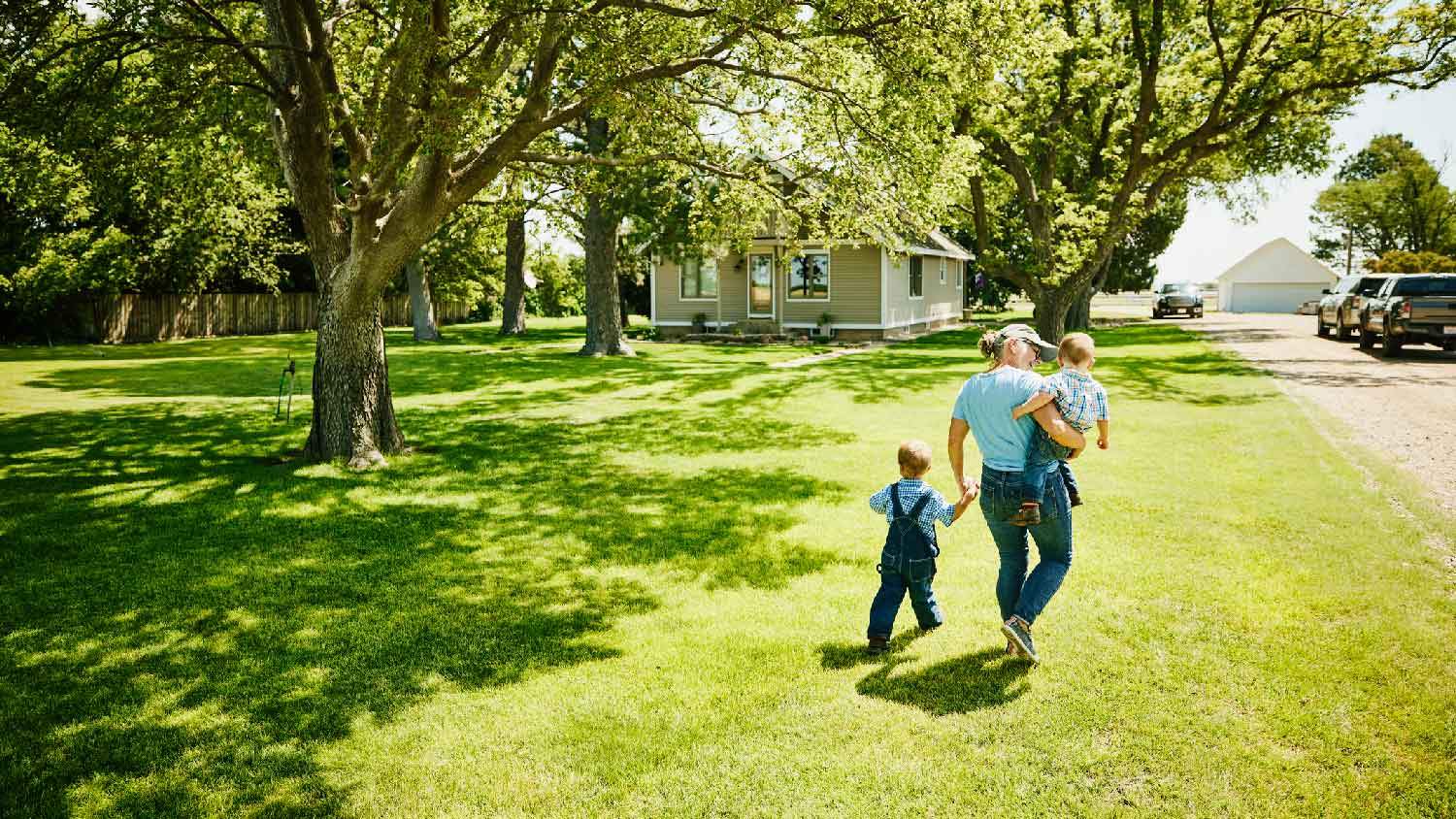
How much it costs to rent a lawn aerator depends on what kind you rent and how long you rent it for. Read on for the full details.
Let your lawn breathe


Both aerating and dethatching will benefit lawn growth, but each one has its use case and purpose.
Professionally aerating your lawn will cost $140 on average.
A professional dethatching service will cost $215 on average.
With time and patience, you can save money by aerating or dethatching the lawn yourself.
A professional can aerate and dethatch a lawn simultaneously.
Who comes out on top in the battle of the aerator versus dethatcher? Well, each one is a different tool with different uses, so it depends on what your lawn needs. Aerators poke holes in your soil to let nutrients, air, and light in, and dethatchers get rid of the buildup of organic material (leaves, grass, etc.) on top of your soil. Here’s what you need to know about both tools and how they work to get your lawn into the best shape ever.
| Difference | Aerators | Dethatchers |
|---|---|---|
| Process | Puncturing holes in the soil | Raking up dead grass |
| When to do it | Compacted soil, stunted lawn | Visible layers of thatch on lawn |
| Time of year | Late spring/early fall | Spring, summer, or fall |
| Benefits | Air, nutrients, and water to root system | Air, nutrients, and water to root system |
| Tools | Aerator (manual or mechanical) | Rakes, chemical dethatchers, verticutters |
| Average cost | $75 – $210 | $40 – $175 |
They’ll both make your lawn look better, but when you aerate versus dethatch varies. While they can be done simultaneously by a professional, you might not necessarily need both.
If your lawn sees lots of sun or has been the victim of a lot of foot traffic, the soil is likely compacted. When the yard’s soil is tamped down, it’s harder for it to absorb water, receive nutrients, or foster a healthy root system. You may notice water pooling on top of the lawn, as well as thinning or browning patches of grass. These are all signals that your yard could benefit from aeration.
On the other hand, you’ll want to dethatch your lawn when the layer of thatch is more than 1/2-inch thick. You’ll likely be able to spot thatch with the naked eye and might notice some browning patches or thinning sections of the lawn.
If you have dead patches in your yard, you may need to aerate those sections again to penetrate deeper. But never aerate your lawn more than two times.
When someone aerates a lawn, they’re essentially poking holes in the soil using a physical, mechanical, or chemical aerator. You can aerate your lawn by hand using a core aerator or rent a mechanical aerator with a motor for a bigger yard. Chemical aerators are becoming increasingly popular and can be purchased at a garden or hardware store.
No matter which tool you use, the process is the same. As you move an aerating tool across the grass, it’ll create holes in the dirt. Sometimes, the tool will create plugs of dirt pulled from the soil. These holes help the nutrients and oxygen reach the soil more easily.
Dethatching a lawn removes the layer of dead grass between new growth and the soil, which naturally builds up over time. Dethatching is essentially raking a lawn and removing that dead layer to allow nutrients to reach the soil better. You can dethatch a lawn using a manual dethatching rake, an electric power rake, or a large vertical mower. When you drag the tools across the yard, they’ll pull up and collect the layer of dead grass or thatch.
With the layer of thatch removed, a lawn’s soil can receive more light, moisture, and nutrients.
When it comes to aerating versus dethatching, the time of year and the frequency will vary. The best time to aerate your lawn is in the spring or fall, depending on your grass type. The grass shouldn’t be dormant when you aerate, and while the soil should be moist, you shouldn't aerate right after heavy rainfall.
Most lawns only need to be aerated once annually. But, if your lawn hasn’t been aerated in years and has thick thatch, you might aerate it twice a year—once in the spring and again in the fall—for a year or two.
You can dethatch your lawn any time between the early spring and early fall, based on the type of grass. Cool-season grasses can be aerated in the early spring and fall. Warm-season grasses can be aerated in the late spring or very early summer.
| Cool-Season Grasses | Warm-Season Grasses |
|---|---|
| Kentucky bluegrass | Zoysia |
| Creeping red fescue | Bermuda grass |
| Perennial ryegrass | Bahia grass |
| Fine fescue | Centipede grass |
| Tall fescue | St. Augustine grass |
On the flip side, you can dethatch cool-season grasses in the early spring or late summer/early fall. Warm-season grasses can be dethatched from the late spring to early summer. You can safely dethatch your lawn once every one to three years.

Regarding aerating versus dethatching, both will improve your lawn. However, each process has its unique set of benefits.
Aeration will improve your lawn in several ways, including the following:
Creating stronger, deeper grass roots
Breaking up existing thatch
Loosening compacted soil
Delivering nutrients and oxygen to the soil
Encouraging soil drainage
Making existing grass more resilient
Dethatching provides its own sets of benefits to the soil, some of which include the following:
Creating better access for water, nutrients, and oxygen to get to the soil and roots
Producing healthier soil
Letting more sun on the roots and grass
Warding off fungus and pests
Reducing standing water on lawn

Aerating and dethatching can be done manually or mechanically, but the tools used are very different.
A manual aerator resembles a pogo stick. Using the T-shaped handle, you pierce the ground, poking a hole in the earth and pulling up a small dirt core.
An alternative to the manual aerator is a spike aerator. This often comes in the form of spikes that you can attach to your shoes to walk around a property and loosen soil.
A mechanical push-behind aerator is typically gas-powered and can be rented at a garden or home improvement store. It operates like a lawn mower; pushing the tool across the lawn pokes holes in the dirt.
A liquid aerator is a relatively new tool with which you can spray a solution on the lawn to make the soil more porous.
A manual dethatcher resembles a rake, where you cut into the lawn with the prongs and pull up thatch.
A power rake or electric dethatcher resembles a lawn mower and uses small blades to pass across the lawn and remove thatch.
A vertical mower uses vertical blades to cut down a yard’s thatch.
The cost to professionally aerate your lawn is between $75 and $210, or $140 on average. If you opt to DIY, you can rent aeration tools for about $100 a day. Asking a pro to dethatch your lawn with a vertical mower costs around $175 an hour. Renting a dethatching machine will cost between $40 and $90 a day.
From average costs to expert advice, get all the answers you need to get your job done.

How much it costs to rent a lawn aerator depends on what kind you rent and how long you rent it for. Read on for the full details.

Artificial grass is a low-maintenance alternative to traditional turf. Learn how much artificial grass installation costs and what affects your price.

Your total lawn care cost depends on several factors, including the type of service and lawn size. Our guide will cover what you can expect to pay for lawn care.

What is carpet grass? Read on to learn more about this hardy and versatile grass type, including its uses, drawbacks, and care tips.

Bark and mulch are materials that can beautify your yard and boost its health. Compare bark vs. mulch to decide which one is right for your lawn.

Why is my yard so soft and soggy? Use this helpful guide to diagnose the issue and implement a solution that will restore your yard’s health.